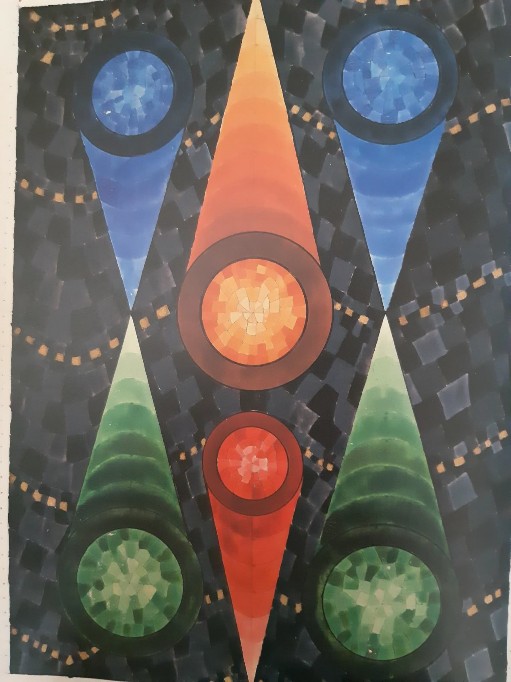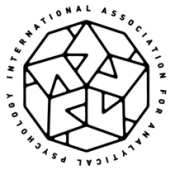
The Collective Unconscious
Walter Boechat
In a lecture given in London in 1936, Jung formulated one of his most comprehensive and final definitions of the concept of the collective unconscious:
“The collective unconscious is a part of the psyche which can be negatively distinguished from the personal unconscious by the fact that it does not, like the latter, owe its existence to personal experience and consequently is not a personal acquisition. While the personal unconscious is made up essentially of contents which have at one time been conscious but which have disappeared from consciousness through having been forgotten or repressed, the contents of the collective unconscious have never been in consciousness, and therefore have never been individually acquired, but owe their existence exclusively to heredity. Whereas the personal unconscious consists for the most part of complexes, the content of the collective unconscious is made up essentially of archetypes.” (CW 9.1, §88).
The concept of the collective unconscious is one of the pillars of the Jungian model of the psyche, and its formulation went through various phases. We can trace the beginnings of its conceptualisation to the first moments of Jung’s creative journey during the period he was working as a psychiatrist at the Burghölzli Hospital. During this time, Jung observed the appearance of typical mythological themes, or mythologems, in the delusions of his psychotic patients. In a well-known interview for the BBC in 1959, he told the interviewer, Morgan Freeman, about a schizophrenic patient of his at Burghölzli who had a vision of a solar phallus. This vision was apparently very similar to a manuscript from the ancient religion of Mithraism. Jung saw in this phenomenon a hint toward a scientific hypothesis for the existence of a supra- personal, or collective, unconscious (McGuire, Hull, 1977).
From that time onward, Jung would set out on a constant search for evidence for his hypothesis. Once his so-called psychiatric period at the Burghölzli hospital came to an end in 1909, Jung carried out an extensive study into the mythology of peoples from all over the world, eventually leading to the publication of his Transformations and Symbols of the Libido (1911/1912), later published as Symbols of transformation (1952). This research revealed the emergence of similar primordial images (Urbilden) across a range of different cultures. However, this hypothesis of the migration of symbols among different peoples was still not sufficient to explain the universal existence of similar images. The only possible explanation for this was an autochthonous sprouting of these primordial images from a supra-personal unconscious. Jung could also observe the constant appearance of collective, archetypal images in his patients’ phantasies and dreams, as well as in his own unconscious material. Based on these various evidences, Jung proposed a hypothesis on the existence of a phylogenetic unconscious common to all mankind.
During a period of self-experimentation, he referred to as his “confrontation with the unconscious” from 1913 to 1932, Jung noted down a series of subjective experiences, including daydreams, dreams and significant internal images. These internal dialogues inspired the publication of his Red Book in 2009. In it, the subjective characters that interact with Jung’s “ego” are partly the result of the author’s personal experience, but they also have roots in the collective unconscious. The historical figures from the Old Testament, prophets and
mythological heroes that appear in the Red Book are collective whilst also referring to Jung’s own personal process. The contents of the Red Book, or Liber Novus as it is also known, went on to make up the stuff of the author’s entire subsequent theoretical work. Liber Novus can be viewed as an account of Jung’s personal experience of the collective unconscious.
During his travelling years from 1920 onward, Jung continuously sought out a proof for the existence of the collective unconscious in the emergence of similar images across completely different cultures, such as the Pueblo Indians of New Mexico, the Elgoniy tribe on the Ivory Coast (Uganda), in Egypt, Tunisia and in the Hindu temples of India. Throughout his theoretical works, Jung returned time and time again to the theme of the collective unconscious, describing it as being objective in nature, in contrast to the subjective part of the psyche he termed the personal unconscious.
Collective unconscious is an important reference in Jungian clinical practice. Symbolic elements appearing in dreams or in the transference can be recognised as belonging to experiences shared by the whole of humanity. Jung maintains that when these collective elements are identified, the patient can come out of the isolation of his neurosis and understand that his experience is shared by many others. He/she may also acquire a new, teleological understanding of his/her own psychological process. This is the theoretical basis for Jung’s amplification method.
For some authors, Jung’s distinction between the collective unconscious and the personal unconscious is purely theoretical, as the content of the collective unconscious can only be perceived through the contents of the personal unconscious or through a personal experience (Williams, 1963, quoted by Samuels, 1986). Manifestations of the collective unconscious can be observed in psychopathology, particularly in psychoses, where there is an intense emergence of archetypal contents, and identification with collective religious images, such as Christ, Mary and the Saints. In psychotics, the interference of the personal unconscious is greatly reduced and it has much less importance than that observed in neurotics, for whom complexes play a predominant role. Manifestations of the collective unconscious can also be observed in mass psychoses and in collective political phenomena. Jung sought to demonstrate the emergence of national-socialism within German culture in the 1930s as a manifestation of the collective unconscious, through the influence of Wotan, the Teutonic God of storms and of war (Jung, 1936a).
Recent Jungian studies on the political psyche (Samuels), the cultural unconscious (Henderson) and cultural complexes (Singer and Kimbles) have also demonstrated pathological manifestations of the collective unconscious in social groups.
References:
Jung, C.G. (1936). The concept of the collective unconscious. C.W. Vol. 9.1. Princeton: Princeton University Press.
(1936 a) Wotan, C.W, Vol. 10. Princeton: Princeton University Press
Jung, C. G. (1911/1912) The transformations and symbols of libido. C.W. Vol. B. Princeton: Princeton University Press
Mcguire, W, Hull, R. F. C. (1977) C. G. Jung speaking. Interviews and encounters. Princeton: Princeton University Press
Samuels, A., Shorter, B., Plaut, A., (1986) A Critical Dictionary of Jungian Analysis London: Routledge
Williams, M. (1963), “The indivisibility of the personal and collective unconscious”, in: Analytical Psychology: A modern Science, ed. Fordham, M. et al., Heinemann, London, 1973
Jung, C.G. (2009), Red Book/Liber Novus, edited by Sonu Shamdasani, WW Norton.

Walter Boechat completed his training at the C. G. Jung Institute- Zurich. He is a founding-member of Jungian Association of Brazil (AJB). He was a Representative of AJB at the Executive Committee of IAAP (International Association for Analytical Psychology) from 2007 to 2013. He has a PhD from the University of the State of Rio de Janeiro. Walter Boechat is a member of the staff in charge of the Brazilian edition of the of The Red Book and The Black Books by C.G. Jung as the reviser of the translations from the original German into Portuguese. Walter is the author of numerous scientific publications in Brazil and abroad. His published work includes The Red Book of C. G. Jung: A Journey to Unknown Depths. (London: Karnac, 2017) and a comprehensive study of myth: Mythopoieses of the Psyche: Myth and Individuation.
1 Reprinted from the Red Book by C. G. Jung. Copyright © 2009 by The Foundation of the Works of C. G. Jung. With permission of the publisher, W. W. Norton & Company, Inc. All rights reserved. Jung painted this image at a crucial moment of writing his Red Book. It conveys harmony and symmetry in the geometrical cones and circles in the front, while the background is depicted in dark colours, lacking the strict order of the front part. It is impossible to define the limits and contents of the collective unconscious since it has no limits. But it manifests itself in an orderly form, in archetypal patterns, in all cultures and through all times.

